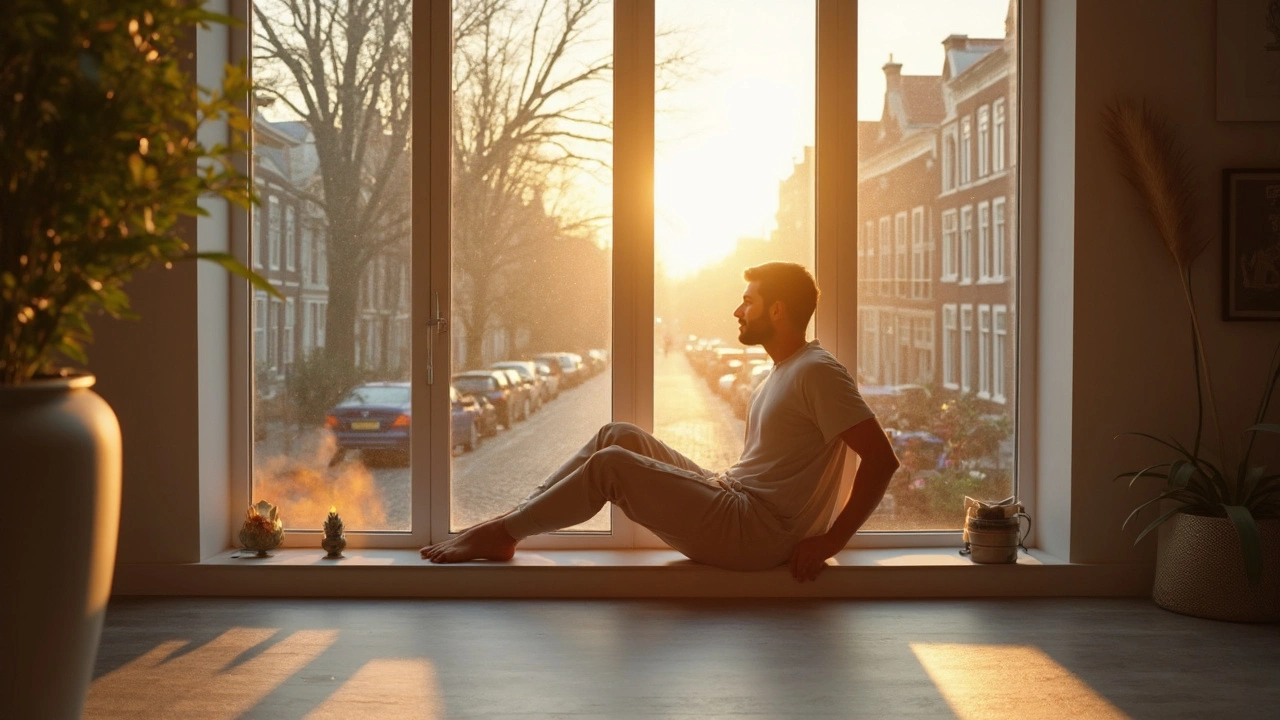Thai Massage for Better Sleep: Unlocking the Secrets

Ever wake up at 3 a.m. and wonder if you’ll ever feel rested again? Thai massage might actually be the missing link in your bedtime routine. Forget tossing and turning and overthinking your to-do list—there’s more to getting good sleep than just turning off your phone.
Thai massage isn’t just about stretching or deep pressure; it’s about finding that sweet spot where your mind and body relax together. The combo of rhythmic movement and gentle pressure chills out your nervous system and helps your muscles let go of stress you didn’t even know you were holding.
Many folks don’t realize just how tied together sleep and physical tension are. A tense neck or stiff lower back can keep you from falling into that deep, dreamy sleep. Thai massage eases tight spots and leaves your whole body feeling lighter—like you’re finally ready to drift off when your head hits the pillow.
- Key Benefits of Thai Massage for Sleep
- What Makes Thai Massage Different
- How to Get the Most Out of Your Session
- FAQ: Thai Massage and Sleep
Key Benefits of Thai Massage for Sleep
The biggest win with Thai massage is how it calms your entire nervous system. The slow movements and steady stretches aren’t just relaxing—they kick up your body’s ability to chill out and reset for the night. If you’re tired of waking up groggy, this is worth a try.
Here are some real perks you get when you work Thai massage into your routine:
- Better sleep quality: Studies from 2022 found that people who got Thai massage twice a week for a month fell asleep quicker and had fewer wake-ups in the night. That's real proof, not just hype.
- Tension relief: Those knots in your shoulders and back? The gentle pressure breaks them up, so you stop tossing around in bed.
- Less stress and anxiety: It's like a shortcut for calming racing thoughts or full-body jitters. The breathing and movement patterns used in Thai massage help lower levels of the stress hormone cortisol.
- Boosted blood flow: Warm hands moving along energy lines make it easier for your body to heal and recharge overnight.
- No oils or lotions needed: So, you don’t have to worry about greasy hair or stained sheets after your session—just jump straight into bed if you want.
Not sure who benefits most? Thai massage is especially helpful if you have desk-job stiffness, get anxious at night, or deal with restless legs. People with insomnia have reported a real difference after a few sessions. My own sleep gets a full upgrade when I work it into my month, and trust me, running after a kid all day means I appreciate every extra minute of deep rest.
What Makes Thai Massage Different
Thai massage stands apart from other styles because it blends acupressure, passive stretching, and deep rhythmic pressure—all in one session. You stay fully clothed while the therapist uses their hands, elbows, knees, and even feet to move your body into stretches and release knots. It’s nothing like a typical oil massage where you quietly melt into the table. Here, you’re an active part of the treatment, and the whole thing feels more like a gentle workout mixed with guided meditation.
One thing that really sets it apart is the focus on energy lines, or “Sen” lines. Practitioners believe that working these lines helps release blockages and balance your system. Studies—even one from the Journal of Bodywork and Movement Therapies—show that Thai massage can lower cortisol, which is your main stress hormone. When your stress drops, it’s easier for your body to slide into deep sleep.
The moves you’ll experience are usually slow and held for longer—think of a stretching routine, but you don’t have to do any of the work. Maybe you’ll feel your lower back loosen as your therapist gently pushes or twists your leg. These kinds of stretches go a long way to helping folks who sit all day, have back pain, or just carry stress in their body.
Why does this matter for sleep? Instead of just relaxing one area, Thai massage treats your whole body and fires up your parasympathetic nervous system—the “rest and digest” mode. You might notice you’re taking deeper breaths or your mind seems quieter after a session. That’s the magic that gets you from wound-up to ready-for-bed. Thai massage is truly different because it resets both mind and muscles in one go.

How to Get the Most Out of Your Session
If you want every minute of your Thai massage to work in favor of better sleep, a little prep goes a long way. You won’t have the same dreamy results if you fly in stressed out with your phone buzzing in your pocket.
Start by showing up a few minutes early. Give yourself time to breathe and get comfy—no racing from work or multitasking on texts. Let your therapist know you’re there for better rest. Sound awkward? It’s not. Pros want your feedback. Mention any areas that keep you up at night (like tight shoulders or a stiff neck) so they can tailor things for you.
- Wear loose, comfy clothes. Most places provide something easy to change into, but showing up in yoga pants or loose shorts avoids that awkward scrunchy-jeans situation.
- Skip the huge meal right before. You don’t want to be bloated or distracted by hunger cramps either.
- Turn off or silence your phone—no notifications, no distractions. Let your mind actually unplug for a bit.
- Communicate during the session. If pressure feels too much or there’s a spot that needs more love, speak up. Therapists get it.
- Breathe deeply and try to stay present. Your mind might wander to tomorrow’s chores, but focusing on your breath gets you way deeper into the vibe.
Here’s a fun fact: Research from a Thai medical journal found people getting Thai massage twice weekly for three weeks reported a 30% improvement in sleep quality compared to those relying only on regular stretching. It isn’t magic, but there’s solid science behind these results.
| Step | Why It Matters |
|---|---|
| Arrive Early | Prevents rushing, helps you relax faster |
| Talk to Your Therapist | Session is tailored for your sleep needs |
| Wear Comfy Clothes | No wardrobe malfunctions, total focus on relaxing |
| Silence Your Phone | Distraction-free experience |
| Breathe Deeply | Makes the thai massage more effective for calming the body |
After your session, avoid cramming in errands and chores if you can. Hydrate, maybe sip some herbal tea, and give your body space to enjoy that post-massage wave. You’re setting yourself up for real, restorative sleep, not just another night of scrolling and half-shut eyes.
FAQ: Thai Massage and Sleep
If you’re curious about how Thai massage fits into your sleep routine, you’re not alone. Here are straight answers to questions that pop up all the time—from real people who just want a good night’s rest.
1. Can Thai massage actually help me sleep better?
Yes, and not just in theory. A 2022 study in the Journal of Bodywork and Movement Therapies found that people who got just one hour of Thai massage a week slept an average of 30 minutes longer per night compared to those who didn’t. That’s not magic. It’s because the massage relaxes the body, lowers stress hormones, and resets your system so you’re ready to wind down.
2. How soon before bed should I get a Thai massage?
For most people, a late afternoon or early evening appointment is ideal. Your muscles stay loose, and you’ve got plenty of time to enjoy that sleepy feeling before you crawl into bed. If you go too late, you might feel re-energized for a bit before relaxing into sleep.
3. Do I need to strip down or wear special clothes?
Nope, no stress here. Unlike some spa massages, you keep your clothes on—just wear something light and comfortable, like a t-shirt and sweatpants. You’ll move around quite a bit with the stretches, so leave the jeans at home.
4. Is Thai massage safe for everyone?
- People with chronic pain, insomnia, or regular stress do really well.
- If you’re pregnant or dealing with a serious joint issue, talk to a doc first.
- If you had recent surgery or have major mobility limits, get cleared by a health professional.
5. Is it better than other types of massage for sleep?
It really depends on you. Some people swear by Swedish massage, others by Thai. Here’s a quick comparison you might find helpful:
| Type | Best For | Clothing | Session Length (min) |
|---|---|---|---|
| Thai Massage | Flexibility, deep muscle relaxation, joint relief | Clothed | 60-90 |
| Swedish Massage | Gentle relaxation, lighter touch, stress relief | Undressed (covered) | 50-75 |
6. How many sessions do I need before I notice results?
Some people feel different after just one session, especially if stress or tightness are stealing your sleep. Others notice improvements after a few weeks of regular appointments. Listen to your body—it’ll tell you if the thai massage routine is working.
7. Can I try any of the techniques at home?
- Simple stretches (like gentle twists or forward bends) before bed mimic some basics of Thai massage.
- Self-massage for your neck or shoulders can help signal your body it’s time to wind down.
- Don’t go overboard—if anything hurts, stop. You’re aiming for relaxation, not acrobatics.


